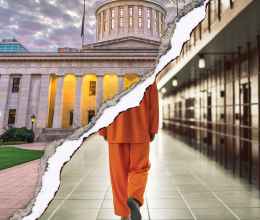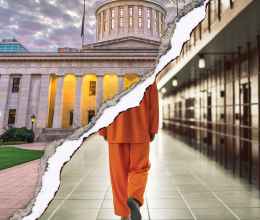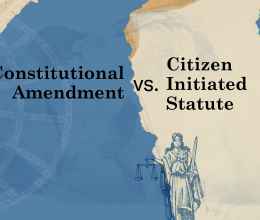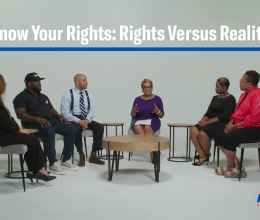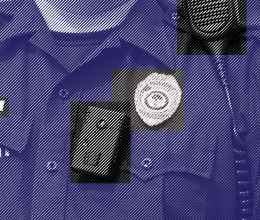Our fight for racial justice doesn’t stop at the figurative “schoolhouse gate.” The school-to-prison pipeline is yet another way that Black and Brown bodies are funneled into negative interactions with law enforcement at a young age, far too often resulting in arrest and the irreparable consequences of getting caught up in the mass incarceration system. Ironically, schools and police have diametrically opposed purposes: one nurtures student growth in a protected environment while the other uses zero tolerance practices to enforce laws. Despite this unbridgeable divide, at least 70% of school districts in Ohio employ School Resource Officers (SROs), which are police whose exclusive patrol is a school building.
“Fundamentally, there is a misunderstanding about why people are opposed to police presence in schools,” says Yousuf Munir, president of Young Activists Coalition, a Cincinnati group pushing for policing reform in Cincinnati Public Schools. “People think it is just because they criminalize, but the truth is that one of the most fundamental flaws of the School Resource Officer program is that it is part of a larger system to keep the mass incarceration system running, and harming students of color is just one cog in that machine. They start by making kids think the police are there to help them, [meanwhile] the lived experiences of people of color tell us that police disproportionately brutalize and scrutinize Black and Brown bodies and protect white bodies.”
Yousuf is absolutely right. Decades of research tell us that law enforcement habitually polices Black communities more severely than white ones, and this remains true in the education setting. Black students are vastly overrepresented in law-enforcement referrals and school-based arrests when compared to any other racial groups. SROs’ implicit biases are one reason for this gap, ultimately leading to the protection of white students and the policing of Black students.
In majority white schools, SROs claim their greatest concerns are external threats to the school. However, in majority Black schools, SROs perceive the biggest threat as the students themselves.
Across Ohio, these overrepresentations are even more stark. Black students in Cincinnati are nearly 5 times more likely to face discipline and law enforcement referrals than their white peers. The same students are between 2-2.5 times more likely to face exclusionary discipline in Columbus. Cleveland students of color are punished 2.25-3 times more. The pattern persists; Black students in Ohio schools are approximately three times more likely to face exclusionary discipline than their white peers. These disparities are further compounded for Black students who are also disabled, LGBTQIA+, or non-native English speakers.
This inequality is more alarming in context: as punishments get increasingly severe and more detrimental to students’ future prospects – progressing from in-school suspensions to expulsions and arrests – the rate at which it disproportionately impacts Black students’ increases.
To be abundantly clear, despite that Black students are more likely to encounter severe discipline at school, they do not misbehave more than white students. They are often punished more severely for less serious and more subjective reasons, like disrespect or loitering. Three decades of zero tolerance policies have led to increased suspension and expulsion for progressively smaller infractions that were never intended to have consequences outside of the classroom. Initially, only a small percentage of behaviors merited SRO intervention; now, the majority of school discipline involves law enforcement participation, either formally or informally (like a verbal reprimand or simple presence). Additionally, many schools require their SROs to undergo implicit bias training because of how frequently they take part in student discipline. However, these trainings have not been associated with decreased bias in SROs. Research indicates that trainings often reinforce racial disparities in exclusionary discipline.
The majority of students report that they do not feel safer in high security environments or when SROs are present. In fact, there is no indication that SROs prevent student crime (in many ways, violent crime increases with SRO presence), only that they increase arrests for minor offenses that can be (and historically have been) handled by school administrators.
Alternative methods of behavior management are possible, and they show promising effects on student development and school safety without the irreparable harm of zero tolerance. Restorative justice practices, which emphasize accountability, harm reparation, and student support services, have been adopted by a number of schools with great success. These solutions are also less expensive; an SRO costs between $75-97K annually, while restorative justice resources are accessible for free and a school psychologist and nurse average $77K and $63K per year, respectively.
Police in schools are a relatively new, and a uniquely American, phenomenon. We have a wealth of examples to guide us into a post-policing era in schools while ensuring the safety of students and staff. Nearly a dozen districts across the country have successfully terminated their use of SROs and surveillance equipment in favor of restorative justice practices.
It’s time for Ohio schools to do the same.


